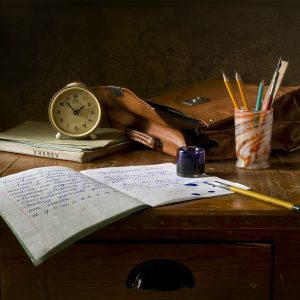This Warnborough Online Course will take you through the process of publishing to a specific publication, submitting work correctly for publication, and meeting the requirements that an editor or publisher has set you. Our expert tutors will guide you through learning how to write to a criteria, dealing with a publisher, and communicating effectively with other people involved in the process of publishing. On completion of this online course you will come away with at least one published work – this will set you on the right path to form your career.
Prerequisites
A writing or publishing course (eg. Freelance Writing, Publishing I, Editing I) or equivalent Medium level computer skills, or higher (eg. Competence with Photoshop or similar software) Photo Practice, or equivalent
Course Structure:
The duration of this online course is 100 hours. This consists of 11 in-depth lessons:
1. A Short History of Photojournalism
- Overview
- History of photojournalism
- Famous photographers
- Margaret Bourke-White
- Gordon Parks
- Diane Arbus
- Nick Ut
- Larry Burrows
2.Ethics and Photojournalism
- Hypothetical
- What is ethics
- Schools of Philosophy
- Utilitarianism
- Rationalism
- Humanism
- Kant
- Socrates
- Other philosophers
- Digital manipulation and ethics
- How ethical is digital manipulation
- Real life
- Codes of ethics
- Guidelines for making ethical decisions
- Ethics in practice
3. What Should I Photograph?
- Composition
- Things to consider
- Camera techniques to help with composition
- Principles of photographic composition
- Qualities of the components
- Effects of different angles on the subject
- Legal issues
4. How Should I Photograph It?
- Terms to learn and understand
- Depth of field
- Digital vs conventional photography
- Shutter speed
- Development of photographic style
- Equipment and materials
- Sensiometry
- Lighting
5. Photo Stories / Editing Images
- Overview
- Ethics of digital manipulation
- Controversy of fairy photos
- Correctly interpreting photos
6. Publishing Opportunities
- Overview
- Portfolio
- Online portfolio
- Direct portfolios
- Slide portfolios
- CD’s
- Using flash
- Music
- Standing out
- Writing a cover letter
- Your resume
- Creating a job hunt database
- How to get work
- How to find a job
- What type of clients do you want
7. Working to Specification / Problem Based Learning
- Overview
- Photography specifications
- Consistency
- PBL Project to develop and draft submission specifications for an electronic publication and then shoot a photo story which meets these specifications. You firstly need to identify two possible subjects for a photo story for that publication, and then follow one of these stories for an extended period of time. You will then select and edit your images – to meet the specifications created for that publication.
8. Publishing Using Online Management Systems
- Types of digital files
- Publishing online
9. Taking Photos and Submitting Images
- Portraiture vs photojournalism
- Sports photography
- Freezing action
- Blurring movement
- Panning
- Sports photography using a digital SLR
- Photographing an event
- Submitting images for publication
10. Writing Articles and Captions to Accompany Your Image
- Overview
- Sentences and phrases
- Writing effective sentences
- Choosing effective words
- Paragraphs
- Punctuation
- Newsworthy articles
- News values
- Storyline
- Writing a news article
- Writing captions
11. Revising Submitted Work
- Overview
- Tips to improve your work
Lesson Aims
- Discuss the nature and scope of photojournalism
- Explore issues of ethics in photojournalism and develop an understanding of your own biases
- To explore the composition of photographs and associated legal issues
- To revise basic terms used in photojournalism
- Understand the photo story and the effect of editing and placement on the meaning of an image
- Research International web sites for publishing and looking at work
- Explain publishing specifications, and apply that understanding to specific photography tasks
- Develop an understanding of online management systems
- Improve your Photography Style and submitting images for publication
- Develop your writing abilities to accompany your images
- Revise your Submitted Work
Opportunities for Photojournalism
Photojournalism is a very busy and competitive market – so searching far and wide is key when looking for work. You should follow this checklist before applying for any paid work in photojournalism:
- A high quality portfolio in printed form, CD and online
- High quality stationary
- A well prepared resume/CV
- A good cover letter
- A tracking method to keep record of all your letters/applications for jobs
- A willingness to move quickly and maybe permanently
How does a Warnborough Online Course Work?
You can start the course whenever is convenient for you. You will be studying from home and have access to support from our qualified tutors. Practical exercises and research tasks will be set at the end of each lesson – including an assignment. You will submit this assignment to your course tutor, who will mark your work and give you constructive feedback and suggestions.
If you have any questions please contact us.





